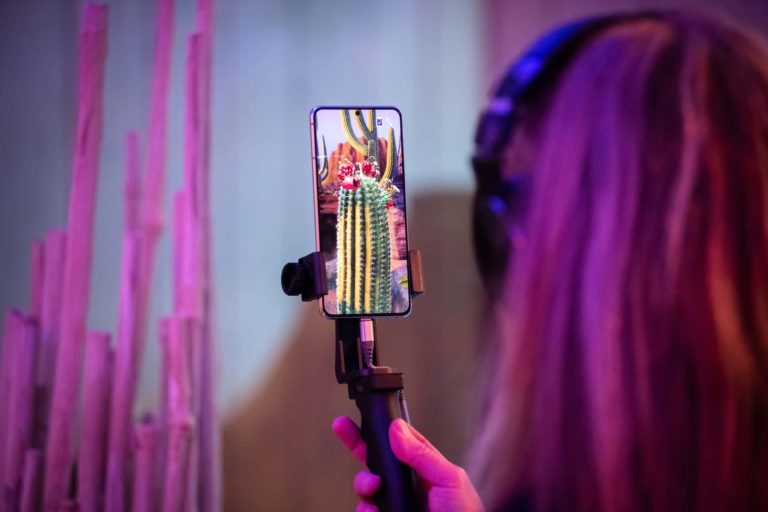
Industry rhetoric about AR’s world-changing status sometimes outweighs evidence that it’s captivating consumers today. Though we see some signals, such as lens engagement figures from Snap and others, we’re often flying blind when it comes to consumer AR sentiment.
Looking to fill that gap, AR Insider’s research arm ARtillery Intelligence has completed Wave V of its annual consumer survey report. Working with consumer survey specialist Thrive Analytics, it wrote questions to be fielded to 102,000+ U.S. adults and produced a report on the results.
Known as AR Usage & Consumer Attitudes, Wave V, it follows similar reports over the last few years. Five waves of research now bring new insights and trend data to light. And all five waves represent a collective six-digit sum of U.S. adults for robust longitudinal analysis.
Among the topics: How is mobile AR resonating with everyday consumers? How often are they using it? How satisfied are they? What types of experiences do they like most? How much are they willing to pay for it? And for those who aren’t interested in mobile AR….why not?
Mobile AR Usage & Consumer Attitudes, Wave 5
The Already-Converted
After examining things like AR formats, satisfaction, and usage frequency, we switch gears this week to examine consumer aspirations. What do they want to see next? Like our price-sensitivity analysis, answers vary based on survey subsegments, such as AR users and non-users.
Starting with the already-converted (current AR users), gaming leads among aspirational use cases (63 percent). That’s followed by education (42 percent), social (41 percent), city guides (41 percent), in-home product visualization (38 percent), and in-home tech support (34 percent).
Extracting insights from these figures and their trending, two things jump out at us: 1. The continued two-wave drop in interest for in-store AR shopping. And 2, the jump in interest for city guides and in-home technical support. One could argue these results are a sign of the times.
In other words, these survey sentiments are Covid-influenced. Though we’re in the waning stages of the Covid era (fingers crossed), new user habits and demand signals have developed over the past two years. Namely, there’s a decline in interest for all-things retail.
In fact, AR in-store experiences grew from Wave II to Wave III of this research, as shown below. They then fell significantly as retail, in general, declined in the Covid era. AR interest correspondingly and unsurprisingly shifted to “virtual” use cases such as in-home tech support.
One exception is the elevated interest in local discovery (e.g., Google Lens). This signals that some Covid-era demand signals will sustain (e.g., eCommerce), while other areas will see consumer eagerness to get back to IRL activity (e.g., local dining and entertainment).

Hypothetical Exercise
Now, what about the above survey sentiments when segmented by non-AR users? Before diving in, this is admittedly a hypothetical exercise because these non-users are essentially reporting the types of experiences they would be interested in if they ever converted as AR users.
First, the bad news: 55 percent aren’t interested in any form of AR (see above). This grew 3 points from Wave IV (and 12 from Wave III). This could reflect the Covid-era factors examined above. Categories include city guides (23 percent) and product visualization (20 percent).
One reaction may be to discount these results because respondents don’t engage in mobile AR and are unlikely to. Again, 55 percent are wholly uninterested in AR. However, these segmented results are important to consider when developing AR product strategies for tomorrow.
In other words, because non-users eclipse users (70 percent versus 30 percent), they represent most of the consumer population. As AR naturally grows over the coming years, these non-users could represent future converts. So their sentiments matter in that sense.
Furthermore, non-users represent different psychographics. AR users are typically early adopters and tech-savvy individuals. Non-users conversely represent the mainstream. So long-term AR product strategies that aim for larger markets should take their sentiments to heart.
We’ll pause there and circle back in the next Behind the Numbers installment with more data analysis…

